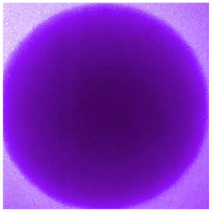Published online by Cambridge University Press: 10 September 2020

This article addresses recent advances in liquid phase transmission electron microscopy (LPTEM) for studying nanoscale synthetic processes of carbon-based materials that are independent of the electron beam—those driven by nonradiolytic chemical or thermal reactions. In particular, we focus on chemical/physical formations and the assembly of nanostructures composed of organic monomers/polymers, peptides/DNA, and biominerals. The synthesis of carbon-based nanomaterials generally only occurs at specific conditions, which cannot be mimicked by aqueous solution radiolysis. Carbon-based structures themselves are also acutely sensitive to the damaging effects of the irradiating beam, which make studying their synthesis using LPTEM a unique challenge that is possible when beam effects can be quantified and mitigated. With new direct sensing, high frame-rate cameras, and advances in liquid cell holder designs, combined with a growing understanding of irradiation effects and proper experimental controls, microscopists have been able to make strides in observing traditionally problematic carbon-based materials under conditions where synthesis can be controlled, and imaged free from beam effects, or with beam effects quantified and accounted for. These materials systems and LPTEM experimental techniques are discussed, focusing on nonradiolytic chemical and physical transformations relevant to materials synthesis.